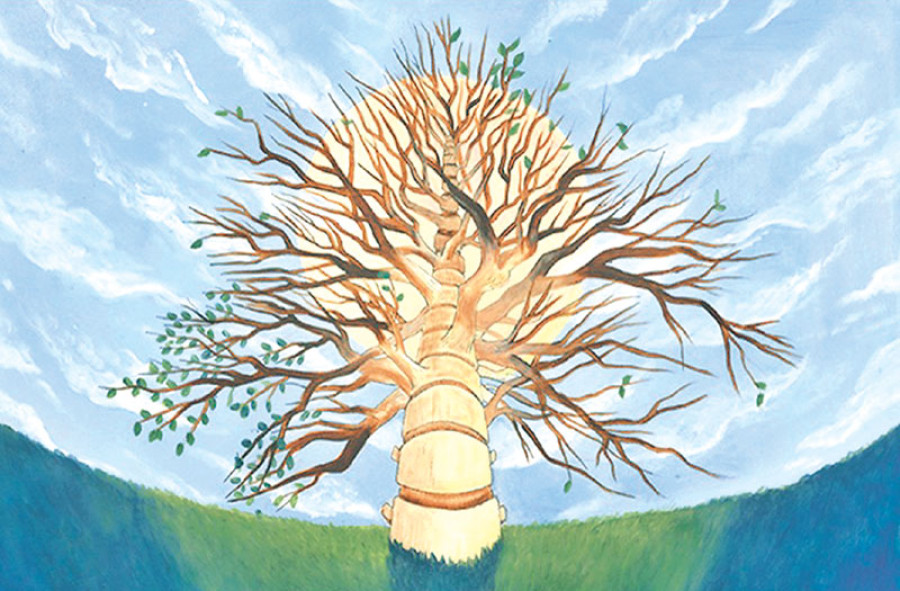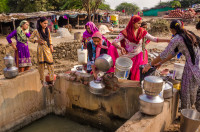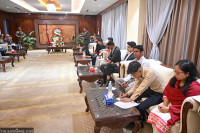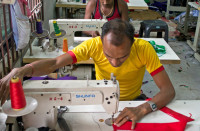Opinion
Building better
We should improve rehabilitation services and build accessible infrastructures
Phillip Sheppard
Today marks the one year anniversary of the Gorkha Earthquake that resulted in large numbers of fatalities and injuries and extensive damage to homes and infrastructure. The earthquake and subsequent aftershocks have resulted in more than 22,300 injuries and 8,790 deaths. Additionally, more than 400 healthcare facilities have been destroyed all over the country, while 700 have been partially damaged. The high number of injuries implies that there are now many people living with some form of disability.
Soon after the earthquakes, Nepal’s rehabilitation professionals including physiotherapists, occupational therapists and prosthetists and orthoptists worked tirelessly to reduce the long-term effects of disability and prevent complications associated with secondary conditions such as pressure sores. Most of the injuries resulted from falling objects and debris or from individuals jumping and running from buildings. The Nepal Physiotherapy Association’s (NEPTA) report mentions that approximately 70 percent of the injuries were fractures. There were also around 200 spinal cord injuries, 40 amputations and a small percentage of other conditions such as traumatic brain injuries.
In the last year, many organisations have worked collaboratively to provide rehabilitation services to patients in acute-care settings. The NEPTA’s report also reveals how it immediately mobilised its resources, connected physiotherapists from around the country and worked to promote rehabilitation within the disaster response. Moreover, Handicap International also responded within hours distributing mobility aids and deploying physiotherapist, occupational therapists and prosthetics and orthotics specialists to all major hospitals in Kathmandu. Dhulikhel hospital and the Spinal Cord Injury Rehabilitation Centre (SIRC) along with other facilities and rehabilitation centres such as Green Pastures Hospital and Rehabilitation Centre increased their patient capacity and had rehabilitation professionals working as part of the medical teams to ensure safety and proper rehabilitation immediately after injury.
Nepal is fortunate to have strong associations and organisations such as NEPTA with highly skilled rehabilitation professionals who were able to lessen the burden on Nepal’s hospitals. This allowed individuals to leave hospitals earlier and better able to manage the often rugged environments in which they live. To help individuals return to their communities, the International Organisation for Migration (IOM) implemented the Assisted Discharge and Referral Service that transferred over 1,800 patients safely between hospitals, rehabilitation centres and the affected communities.
Inaccessible environments
Despite the tremendous efforts so far, affected individuals still require ongoing rehabilitation and care. One year after the earthquakes, many individuals have not received follow-up health services and are living in inaccessible
environments. For instance, while conducting community outreach in remote VDCs of Sindhupalchowk, our rehabilitation team visited a 35-year-old patient with a spinal cord injury who was confined to a single room because of the lack of follow-up care and in a house that was not wheelchair friendly.
In order to allow our family members and friends to live a fulfilled life and manage their injuries, we need to ensure that they can access and receive the care they need and that we construct infrastructure everyone can access.
Additionally, it is also important to have healthcare and rehabilitation services located close to where the injured live. Many patients cannot financially afford to travel to and from Kathmandu for regular follow-up care. The effort required to reach the Capital from the most remote communities is often exhausting. It is not realistic to expect that even from a person without disability.
Various strategies have been developed to provide care in the communities such as outreach, medical camps, physiotherapists at district hospitals, community-based rehabilitation and step-down or transitional care facilities. One such facility is the Injury and Rehabilitation Unit (IRU) developed by IOM in collaboration with the District Health Office and District Hospital Sindhupalchowk. Long-term, Nepal has developed the National Policy and Plan of Action on Disability to improve access to healthcare and rehabilitation services for persons with disabilities. This is an initiative with immense potential.
Small changes
Every individual in Nepal can and should contribute to improving the quality of life of the people injured in the tragic events. This can easily be accomplished by building accessible houses and communities that allow persons with disabilities to participate in every aspect of daily life independently. Simple modifications such as building ramps, lowering the door handles and creating enough open space for wheelchairs to move around can be easily implemented.
Nepalis always seem to persevere and find the positives in all situations. If there is a silver lining from the earthquakes, it is that they demonstrated the need to improve healthcare and rehabilitation services and create accessible infrastructures in a country with mostly rugged terrain.
Sheppard is a physiotherapist with the International Organisation for Migration, Nepal




 17.12°C Kathmandu
17.12°C Kathmandu










